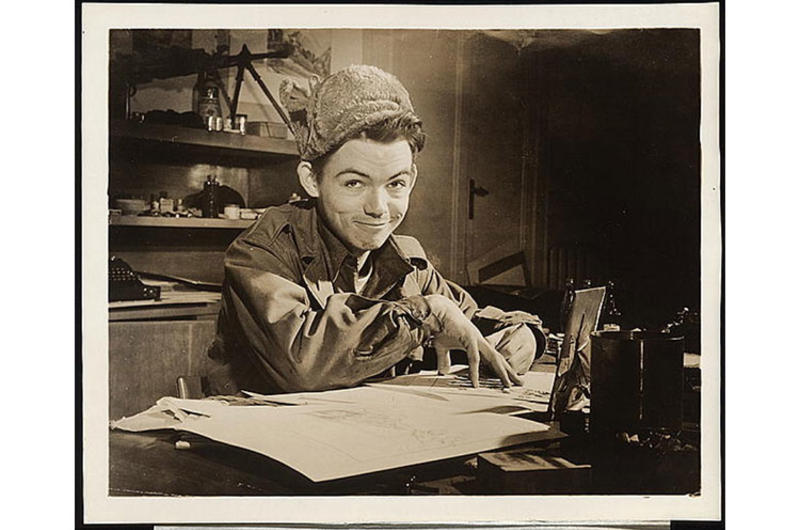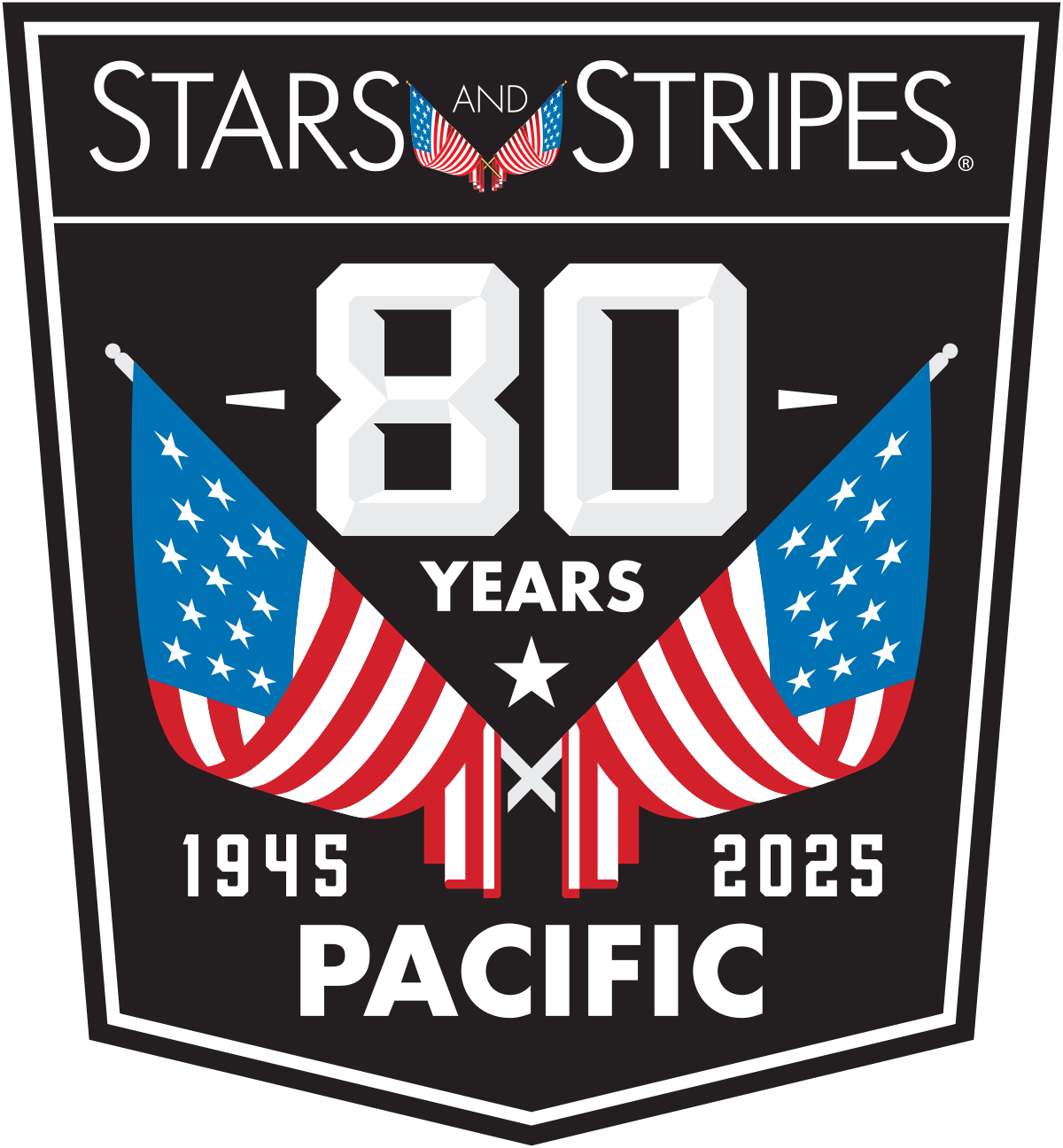COMMENTARY: Cartoons in Stars and Stripes

By Cord A. Scott | UMGC Korea
Editor's note: Visit the Comics page to view Bill Mauldin’s Up Front cartoons.
One of the items synonymous with newspapers is cartoons. The idea of cartoons illustrated by, and for the entertainment of, troops has been around for a considerable time. For American servicemen, the paper that was most often associated with these specific cartoons was Stars and Stripes. While there is uncertainty concerning the future of the paper due to governmental funding in 2020, the history of the cartoonists from Stars and Stripes is substantial, and has lasted well past their time illustrating while in the service.
The modern newspaper of Stars and Stripes originated on Feb 7, 1918. The main cartoonist hired by the paper was USMC private Abian “Wally” Wallgren. His work appeared on page seven of the eight-page paper, published each Friday until the end of June 1919. His cartoons often centered on the quips and gripes of the doughboys in the trenches. While some of the later cartoons were simply reproductions of earlier ones, most of the illustrations served as a way to delve into the mindset of the US soldier. From his thoughts on the ever present lice and rats in the trenches (not to mention what to do with them for sport) to the adaptive nature of troops being sent to Siberia in 1918 to monitor the Russian revolution, the cartoons served to inform and entertain.
When the paper ceased publication in June in 1919, the idea of informing the troops shifted to local base publications. When the US was again in war after Pearl Harbor in December 1941, the newspaper restarted, albeit mostly in Europe. The most famous of all Stars and Stripes cartoonists was Bill Mauldin. His feature Up Front, featuring two “dog-faces” Willie and Joe, noted the conditions of the Italian front, the cold, the poor food and the general danger involved. For a “cartoon”, his work was important as it allowed the enlisted to laugh at the conditions on the front, as well as gripe about things that bothered them, such as Mauldin’s famous cartoon noting the 1,000 mile detour due to Patton’s orders of decorum for uniforms while in a combat zone. Mauldin won his first Pulitzer for his work in Stars and Stripes for his cartoon that showed exhausted US troops and German PoWs with a caption “Fresh, spirited American troops, flushed with victory, are bringing in thousands of hungry, ragged, battle-weary prisoners.”
In addition, there were cartoonists that made light the issues at the front. One was Dave Breger, who was the creator of “G.I. Joe”. Another creator was Dick Wingert who was the only cartoonist to draw dead soldiers of any sort, in the series “Hubert”. Another famous cartoonist who had a career before the war was Milton Caniff, who initially wrote Terry and the Pirates. By World War II, Caniff, who was ineligible to serve, drew a cartoon specifically for the enlisted troops, entitled “Miss Lace”. Provocatively drawn, the character would not date any officers, but was always willing to accommodate the enlisted troops for dancing or conversation. This cartoon ran in various camp papers through the Camp Newspaper Service.
As the war ended, Stars and Stripes started publication in the Pacific, and therefore, cartoons focused on the occupation in Japan following the cessation of combat. One of the more prolific cartoonists at this time was Bill Hume, known for his series “Babysan” on how the US sailors in the Tokyo area often interest in Japanese culture, through interaction with women. Hume was stationed near Yokosuka, and his work yielded not only cartoons for Stripes, but also yielded two books as well.
It was logical that as US troops were committed to the Korean peninsula in 1950 to thwart communist advances, that Stripes also produced cartoons. Many of these cartoons emulated Bill Mauldin’s style, but also tried to be specific towards each branch of service. Among these cartoonists was a man who gained favor later on for his children’s work: Shel Silverstein.
By the time of Vietnam, there were additional cartoonists in Stripes, among which included Will Eisner (the creator of the Spirit, as well as PS Magazine for the US Army over 30 years!). Another cartoonist who illustrated the events in Vietnam was Vernon Grant, who also reproduced cartoons for the Japanese market. Grant was popular with the troops and drew cartoons for Stripes.
As new forms of entertainment emerged, the need for cartoonists abated. Stripes has continued to incorporate cartoons, now entirely as syndicated strips from US papers. There is also a Sunday comics section, which features a drawing of Mauldin but as an advertisement asking about comics for the paper going forward. The lineage of cartoonists continues to this day, with current artists like Max Uriarte and Basil Zaviski, who produced cartoons that centered on military life or themes. While Stripes may be in doubt, their work and observations on life in the military continue to entertain, inform, and vent.
------------------------------------------------------------------------------------------------------------------------------------------------------
About the author: Cord A. Scott has a Doctorate in American History from Loyola University Chicago and currently serves as a Professor of history for the University of Maryland Global Campus in Asia. He is the author of Comics and Conflict, as well as Four Colour Combat. He has written for several encyclopedias, academic journals such as the International Journal of Comic Art, the Journal of Popular Culture, the Journal of the Illinois State Historical Society, and is in several books on aspects of cultural history. His most recent work is on US military cartoons in WWI, which was published in the Journal of War, Literature and the Arts. He resides in South Korea.



